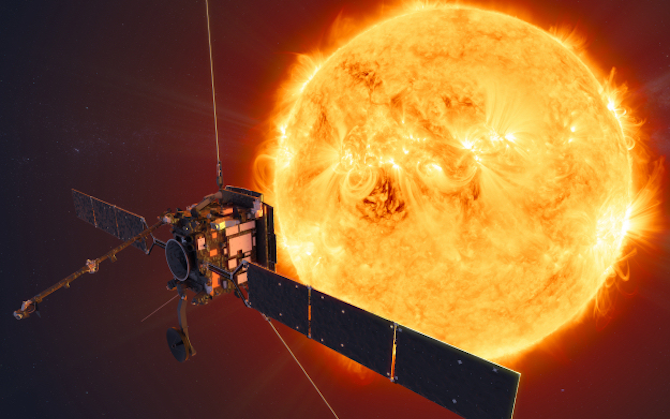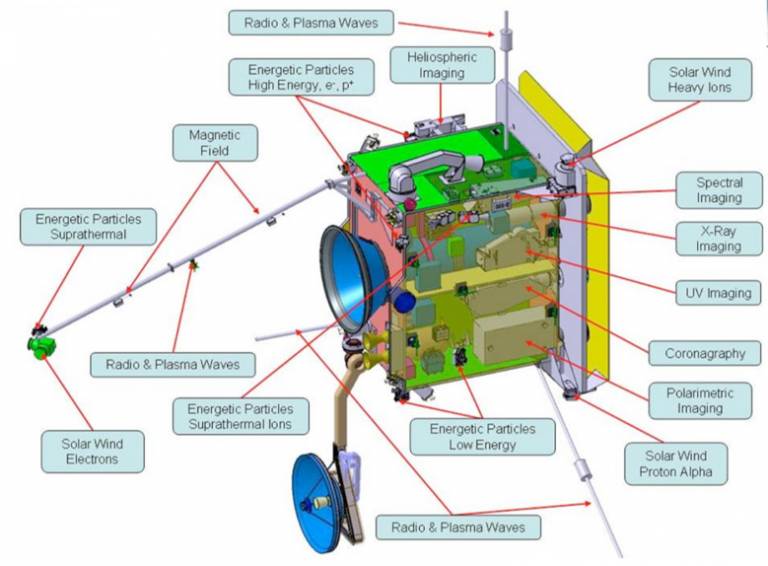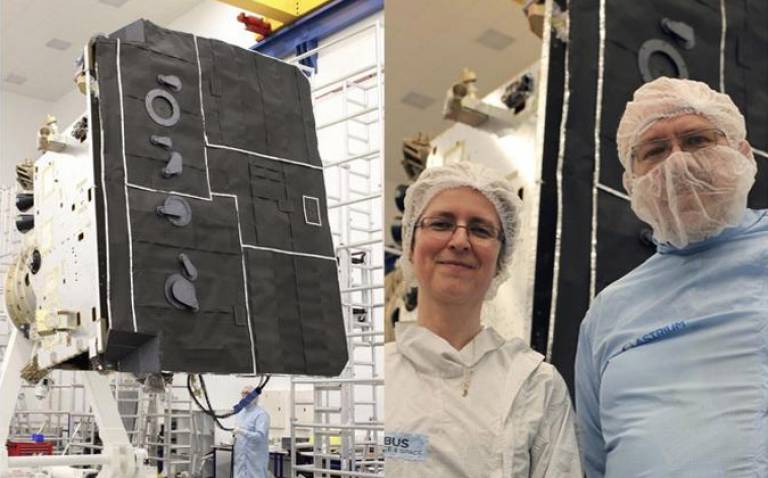Solar Orbiter
The spacecraft will carry a payload comprising 10 separate instruments including remote sensing instruments and in situ instruments for observing the sun.

9 January 2020
Solar Orbiter was selected as the first element in the European Space Agency (ESA) Cosmic Vision 2015-2025 programme in October 2011. Following the launch, which is planned for Ferbruary 2020, the Solar Orbiter spacecraft will orbit the Sun at ever closer distances, reaching 0.28 AU (1 AU – an astronomical unit – is the distance of the Earth from the Sun) by the end of the mission. These near-Sun distances allow the spacecraft to orbit the Sun at close to the same angular speed of the solar rotation (~25.5 days), such that individual active regions on the surface will be beneath the spacecraft for an extended period of time. The plane of the orbit will also be increasingly tilted, such that the spacecraft will reach higher and higher heliocentric latitudes (~34° by the end of the mission).
The spacecraft will carry a payload comprising 10 separate instruments, or suites of instruments. These can be divided into two groups: (i) The remote sensing instruments, which are tasked to observed the dynamics of the Sun and its surface layers in a variety of different wavelengths and through a variety of techniques; (ii) the in situ instruments which will study the particles, fields and waves fields in the solar wind immediately above those source regions on the Sun which are monitored by the remote sensing instruments.
A vital element in the Solar Orbiter in situ payload is the SWA suite of sensors. Comprising 3 separate sensors and a central DPU, the SWA suite has the key task of characterizing the vast majority of the electron, proton and α-particle populations, which comprise the solar wind, together with measurement of the abundant heavy ions, such as O6+ and low iron charge states such as Fe9+ or Fe10+. These measurements provide the means by which plasma processes observed remotely on the Sun can be linked to their output exhausts in the solar wind.
The SWA investigation is a major international hardware collaboration, led by UCL/MSSL (Principal Investigator: Prof. Christopher J. Owen). In addition to the overall leadership of the suite, UCL/MSSL will provide the bulk of the hardware for the Electron Analyser System, one of the 3 sensor systems within the suite. The Proton-Alpha Sensor and the Heavy Ion Sensor are led by partners in France and the USA respectively. The central data processing unit, built in Italy, serves all 3 sensors and completes the suite.
 Close
Close



